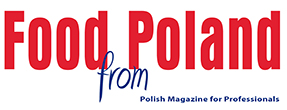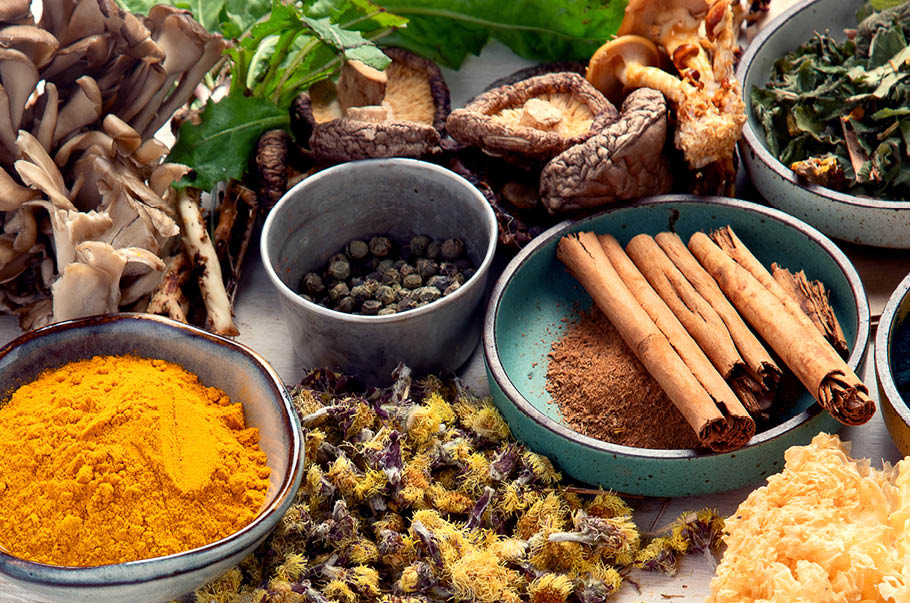„In a healthy body there is a healthy spirit” – a saying that has been known for generations perfectly describes current trends in the food market. Despite many impediments, such as new regulations or high prices of everyday products, Poles are meticulously choosing their food for the sake of their health and well-being. This is a trend that has dominated the recent ‚post-pandemic’ years and will be one of the main trends of 2025.
The food market in 2025
The grocery market in Poland is undergoing dynamic changes, with consumer preferences increasingly focused on health, ecology and conscious product choice. In 2025 the key trends that will shape the offer in shops point to the need to adapt sales strategies to meet new customer expectations.
„Growing health awareness means that functional and health-promoting products are becoming increasingly popular. Consumers are eagerly reaching for foods enriched with vitamins and minerals, as well as isotonic and protein drinks, which fit the needs of active people and those who care about a healthy lifestyle. The introduction of these types of products to the offer is a response to the growing trend of preventive health care,” points out Karolina Mańkowska, analyst at ASM SFA.
As the expert points out, another important direction is the interest in local and seasonal products. Consumers prefer short supply chains, which is evident in their choices. Thus, they support local farmers and suppliers. Seasonality – from being the weaker side has turned into the strong one. Choosing products that are only available for a certain period of the year has become a standard for conscious consumers. This is because they are oriented towards freshness and the origin of the products. „Updating the offer in line with the seasonal cycle and promoting local initiatives can significantly increase a shop’s competitiveness,” – Karolina Mankowska adds.
Vege and zero waste
As in previous years, we may be experiencing dynamic growth in the plant-based food market. „Alternatives to meat and dairy, based on legumes, mushrooms or algae, are finding more and more followers, both among vegans and vegetarians, as well as people who limit their consumption of zoonotic products. The offer in this category should be diverse and innovative in order to respond to consumer expectations of a healthy and sustainable lifestyle,” points out the ASM SFA expert.
Zero waste is also an interesting theme. It combines both environmental and economic concerns, as well as a social dimension – considering the problem of hunger in many parts of the world, but also in our own backyard, as many people even in Europe are undernourished and suffer from hunger.
„The zero waste trend and sustainable packaging are playing a big role. Customers are keen to choose products without packaging or in eco-friendly, biodegradable material. There is also growing interest in items made from ‚ugly’ fruit and vegetables, which fit in with the idea of not wasting food. Promoting such solutions is not only a pro-environmental measure, but also a response to the needs of thrifty and conscious consumers” – explains Karolina Mankowska.
In the global village
The aforementioned social aspect is linked to problems that affect the entire economy. This is why it is so important to be able to act in a crisis in such a way that its effects are felt as little as possible. ASM SFA’s expert points out that the current economic challenges, such as inflation or problems related to global crises, influence consumers’ purchasing decisions.
„Priorities are changing – the popularity of cheaper alternatives and base ingredients is growing, prompting customers to prepare their own meals. At the same time, global problems with importing selected products may increase the importance of local substitutes, which is an opportunity for domestic suppliers and producers,” – explains Karolina Mankowska.
Analytically, ASM SFA forecasts that 2025 will bring a further development of the trends that are already shaping the FMCG market today. Consumers expect products that are healthy, organic, functional and tailored to their individual needs – so these will largely be created by companies. And those who respond first – manufacturers and retailers alike – will win customer loyalty and strengthen their position in a competitive market.
2025 according to the experts
Researchers, on the basis of deep, multi-year research and analysis, try every year to predict what the next few years will look like. Many trends from previous months hold, but the environment always dictates what is new. According to Mintel’s predictions, four trends will be key for the food industry in 2025: Fundamentally Nutritious, Rule Rebellion, Chain Reaction and Hybrid Harvests.
The first trend cited relates to the relationship with food – reaching for food will be coupled with attention to health. „The emergence of GLP-1 drugs and their role in weight loss and weight management will inspire global consumers to rethink the relationship between food and medicine. In parallel, as confusion grows around what is healthy and what is not, brands will seek to simplify their health promises, focusing on promoting simple-to-understand benefits and key nutrients,” points out Honorata Jarocka, Principal Analyst at Mintel.
As the expert emphasises, information on the packaging will play a key role in consumer choices. Data on the content of protein and fibre, as well as vitamins and minerals will attract weight-loss medicine users, for whom balancing nutritional needs will be a priority, claims Honorata Jarocka. It will also send out a strong message to consumers who structure their menus according to their individual needs or moods. Therefore, many innovations can be expected in the segment of products rich in essential nutrients. So that their consumption is associated with improved health, both in the short and long term.
Innovation as a driver for development
The trend, described by Mintel as a ‚rebellion against the rules’, is supposed to mean, in practice, a break from established patterns of what a product and its consumer should look like. Now, the thinking and creation of new articles is to go beyond the usual standards, and food brands will focus on the real needs of consumers when designing innovations – what their consumers actually eat and drink.
„Brands will be more in tune with how consumption actually is rather than how they feel it should be. Supporting the rebellious tendencies of open-minded consumers who want to break the mould, brands should be more creative in their approach to innovation, experimenting with things that go beyond the norm. Brands in their communication may also seek more often to break the social taboos surrounding less publicised health issues. One important space, among others, remains the role of food and drink in managing mental wellbeing,” explains the Mintel expert.
We can therefore expect creative ideas and interesting innovations. And we will be inspired above all by the next generation of consumers, who are known for their openness in expressing their views, and for having a great deal of agency in the process.
For a shared future for the planet
Sustainability, ecology, recycling or decarbonisation are concepts that have taken on a deeper meaning in the last year. They are no longer just an idea, but a pillar of activity for almost all producers in the food market.
„Increasingly, frequent production challenges related to climate and geopolitical events are not only affecting the price of the shopping basket, but also increasing consumer awareness of how more, and less distant world events may affect their eating style. In a volatile world, food brands should communicate more frequently on how they are adapting to changes in local and global sourcing of ingredients and the benefits to consumers by doing so. Greater cross-sector and international collaboration will be required, as well as an emphasis on scalable technology solutions. Looking ahead, more ingredients will be sourced from alternative and potentially more reliable growing regions, while consumer identities will be even more strongly shaped by social media, immigration and travel,” comments Honorata Jarocka.
That green business playing a huge role in shaping the FMCG market has become a reality. Companies report widely on their activities in this area, trying as hard as possible to support keeping the natural environment in good condition. Regenerative agriculture, which not only benefits in higher yields, but above all preserves biodiversity, is becoming an interesting thread.
AI in the food industry
Artificial intelligence has become an everyday tool used in almost every industry and at almost every level. AI is evolving at a staggering pace improving practically day by day.
„The increasing use of technology in food and beverage production is a scenario whose inevitability is primarily due to challenges within the supply chain. This may cause concern on the part of some consumers, hence brands should prioritise greater transparency and focus on communicating health benefits and advantages. Importantly, technology should be presented as complementing nature and enhancing the natural. New technologies need to be humanised and brought closer to consumers in an accessible way, while increasing acceptability for new solutions, including developing the role of AI in the food industry,” points out Honorata Jarocka of Mintel.
Artificial intelligence, used judiciously, can streamline many processes in companies, including those requiring creative thinking. Other modern technologies also contribute to the industry. However, the complete replacement of humans is not yet being considered as a possible scenario. We should consider the development of technology as support and a unique tool, for the 21st century.
2025 will certainly be a period of change in technologies – which will be tailored to individual needs. The colour green will be a symbol not only of plant-based cuisine, but also of the whole process of sustainable production that producers will strive for. The younger generations will dictate the terms, and the older ones will certainly be inspired by the courage of the young to express their preferences.












